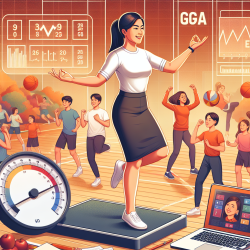The study "Tracking Changes of Chinese Pre-Service Teachers’ Aerobic Fitness, Body Mass Index, and Grade Point Average Over 4-years of College" provides valuable insights into the relationship between physical fitness and academic performance. This research highlights the importance of understanding how aerobic fitness (AF), body mass index (BMI), and grade point average (GPA) interact over time, particularly in higher education settings.
The Study's Key Findings
The longitudinal study tracked 1980 Chinese pre-service teachers over four years, examining changes in AF, BMI, and GPA. The findings revealed that while GPA and BMI increased annually, AF significantly declined by the fourth year. A notable interaction was observed among GPA, gender, and BMI, indicating that females who were overweight or obese had lower GPAs.
Implications for Practitioners
- Intervention Design: The study suggests that interventions should consider class standing and gender to effectively address fitness and academic performance. For instance, targeted programs for female students may help mitigate the negative impact of higher BMI on GPA.
- Continuous Physical Education: The decline in AF despite mandatory physical education in the first two years indicates a need for sustained physical activity programs throughout college. Practitioners should advocate for policies that maintain or increase physical education requirements beyond the initial years.
- Holistic Health Education: Educators should emphasize healthy weight management to prevent both obesity and unhealthy weight loss. This approach can help students maintain optimal health-related fitness (HRF) levels.
The Role of Further Research
This study underscores the need for additional research to explore the complex relationships between AF, BMI, and GPA in diverse populations. Future studies could expand on this work by including varied demographics and examining other factors influencing academic performance.
This research offers a foundation for developing strategies that integrate physical health with academic success. By understanding these dynamics, educators can better support students in achieving their full potential both academically and physically.










